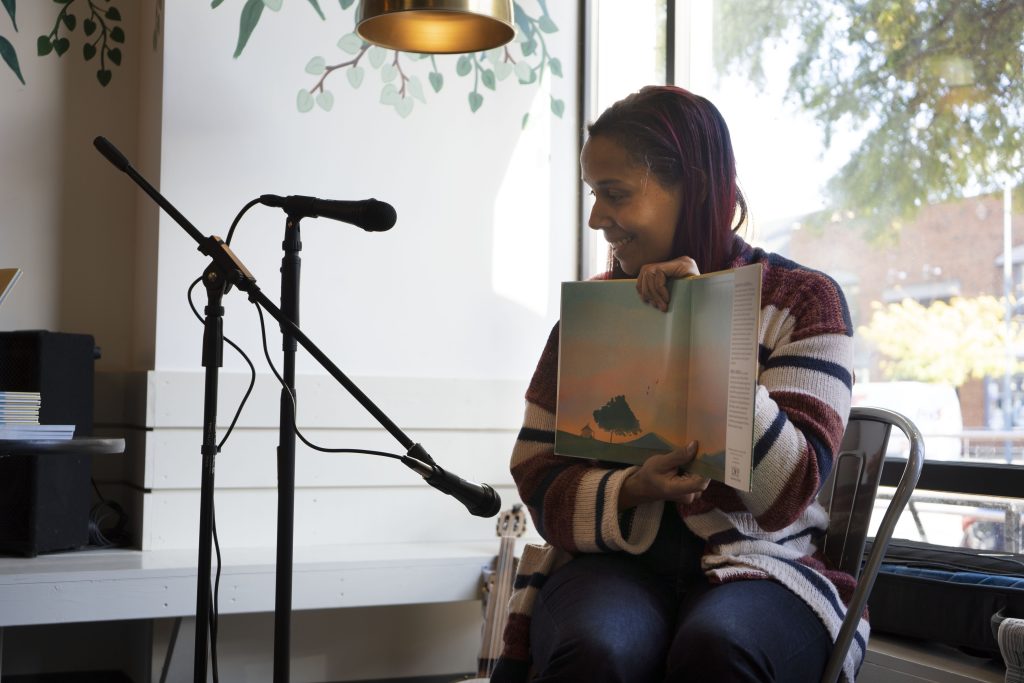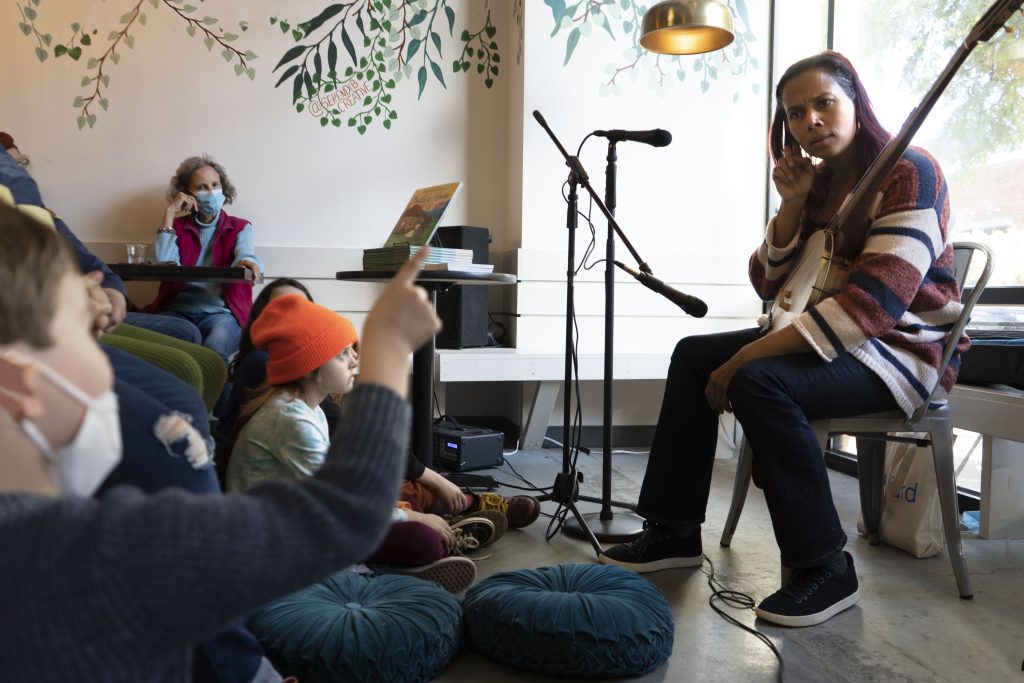Catching up with Rhiannon Giddens
An illuminating afternoon with the Southern Futures Artist-in-Residence

It’s been a busy year for Rhiannon Giddens. Since finishing her propulsive new opera, Omar — set to make its North Carolina debut this spring — the Southern Futures Artist-in-Residence hasn’t stopped moving. The past few months have been especially hectic, with trips to New York, Los Angeles and Dublin, as well as other, more far-flung locations. Between these events, as well as the recent launch of her new children’s book, “Build a House,” moments of rest must have been hard to come by.
Fortunately, last week’s visit to Chapel Hill gave Giddens a chance to regroup and reconnect with her North Carolina roots. Though the schedule was predictably packed, she had the chance to meet with community members and Carolina Performing Arts staff to discuss opportunities for collaboration. Early in the week, she also spent some time diving into the Louis Round Wilson Library’s robust archives in search of new material.
Giddens’ trip culminated on Wednesday, October 19, when she stopped by Epilogue Books to promote her new children’s book. Seated before the audience, a banjo at her side, she read from “Build a House,” an alternately harrowing and uplifting story of a Black family’s resilience in the face of sorrow and dispossession. Paired with painter Monica Mikai’s striking illustrations, Giddens’ words ably captured the attention of both the children and the adults in attendance. And, as a special treat, Giddens performed her song of the same name, composed for the 155th anniversary of Juneteenth in collaboration with world-renowned cellist Yo-Yo Ma.

After the reading and performance, Giddens stuck around to sign books and take questions from the audience. During the Q&A she spoke on a wide range of topics, from “Build a House” to her long journey through the music world, often with refreshing honesty.
“I didn’t pick up any instruments until I was 23,” she told the audience, when asked about her musical development. “I was bad for a while. That was helpful, I think. It’s good to break yourself down to the basics, good to be willing to suck.”
As one might expect, the audience was especially keen to hear about the the making of Omar. Giddens was open and authoritative on the subject. Again and again, she underlined the collaborative nature of the project, and she discussed the work of Michael Abels, her co-composer, in glowing terms. Though she admitted that composing an opera for the first time was a significant challenge, she said Abels eased much of this challenge, helping her to stick to a more structured process. In addition, she spoke of her thrill at the idea that the form might be more familiar than she’d initially expected. Only, in Omar, she said, “the whole orchestra is a banjo.”
Toward the end of the Q&A, Giddens took a moment to discuss Omar ibn Said, the opera’s historical inspiration. She was quick to note that, though the opera contains many elements pulled from ibn Said’s 1831 autobiography, it takes a greater interest in the enslaved West African scholar’s internal, spiritual journey than it does in bare biographical facts. She stressed the need for further exploration of ibn Said’s whole story, given its cross-cultural connections. “This story should be told from multiple vantage points,” she said. “Omar is just me trying to find one way — my way — through the story.”
Here’s hoping more artists of Giddens’ caliber take up the challenge.


